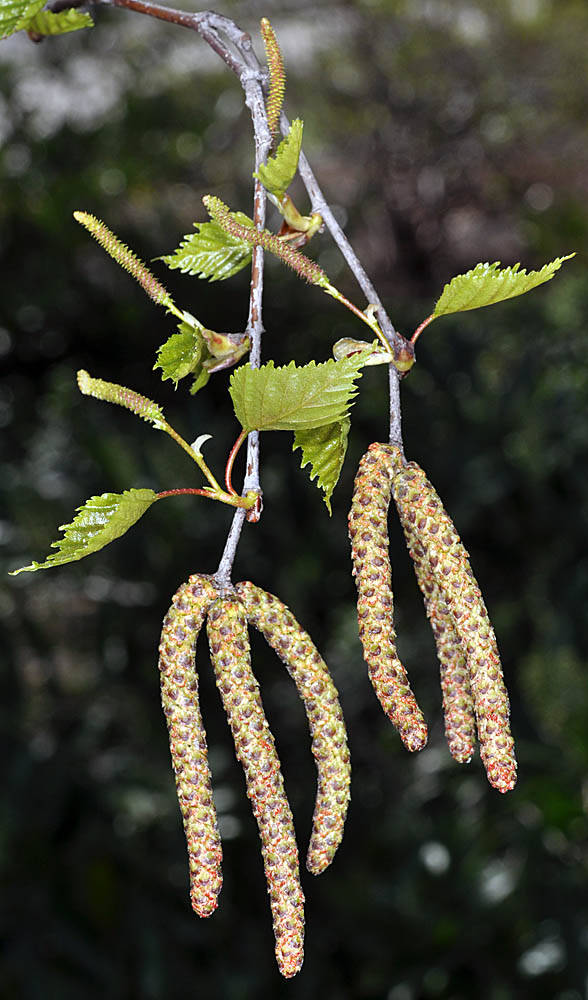Betula pendula
European white birch
pendent, glabrous or very finely puberulent, sometimes glutinous when young but without evident resin-blisters.
blades triangular to triangular-ovate; thin, green above, pale green beneath, 41–57 × 31–50 mm, bases obtuse or truncate;
margins irregularly serrate;
teeth (12)15–27 on each side; acute; each side with 5–7 large teeth, 2–3 mm, terminating main veins; other teeth very much smaller;
secondary veins 5–7 on each side;
tips strongly acuminate;
surfaces glabrous;
petioles 15–25 mm, glabrous or very finely puberulent.
broadly winged;
wing broader than seed.
25–35 mm;
bracts with a broad, triangular or ovate central lobe and very broad lateral lobes.
Betula pendula
River bottoms, forests, disturbed areas. Flowering Apr–May. 0–900 m. Casc, Est, Sisk, WV. WA; north to British Columbia, east to MA; Asia, Europe. Exotic.
Weeping birch is a popular shade tree, widely planted in western Oregon, and occasionally escaping. It differs from all our native species in its pendent twigs and its triangular to triangular-ovate, strongly acuminate leaves. Plants with deeply laciniate leaves are sometimes cultivated, but this morphology is not known from escaped plants.
Alan Whittemore
- Local floras:
BC,
OR,
WA
- Local Web sites:
Flora NW,
PNW Herbaria
WildflowerSearch
iNaturalist (observations)
USDA Plants Database
- LBJ Wildflower Center
- SEINet
- Plants of the World Online
- Encyclopedia of Life
- Wikipedia
- Google Image Search



